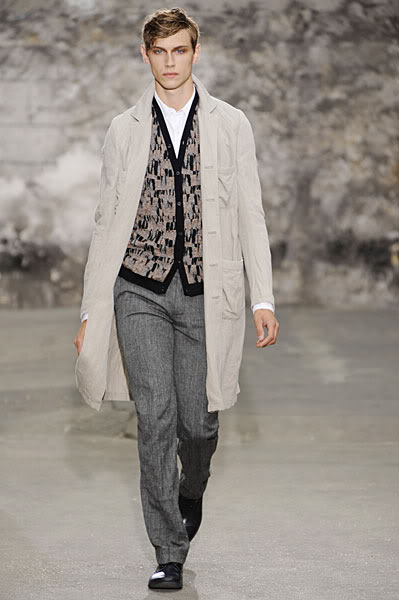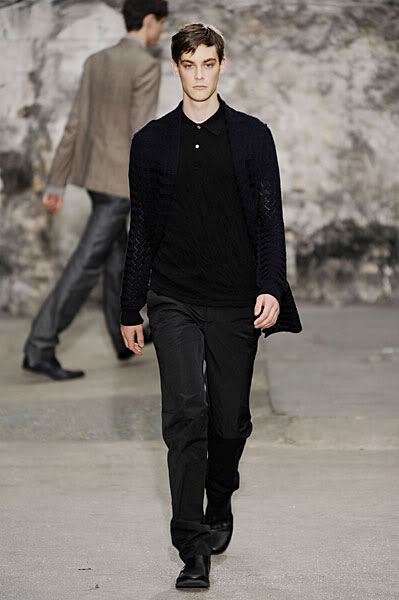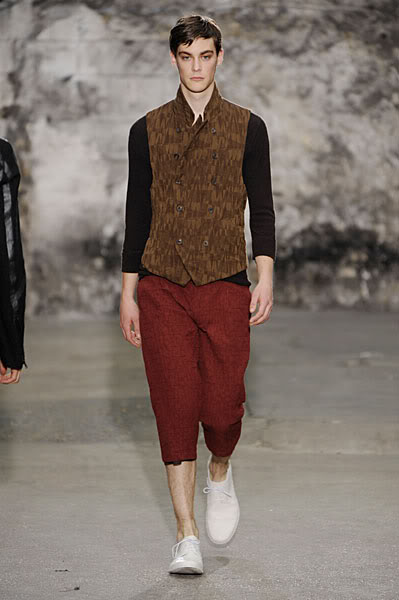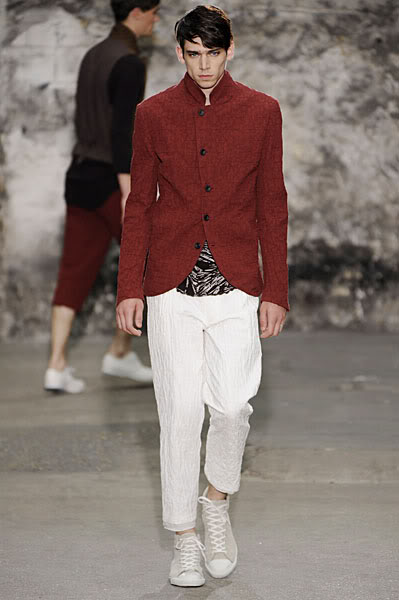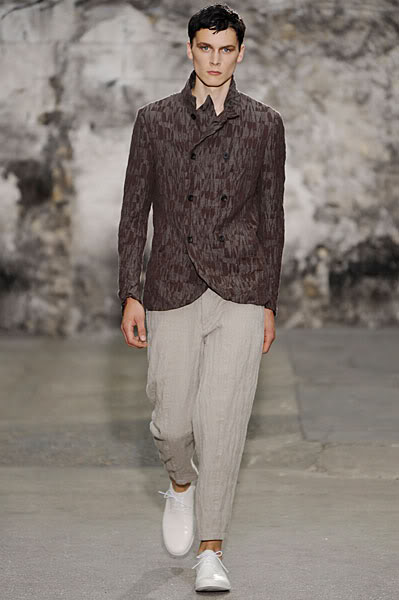Feeling A Collection
Spring/Summer 2009
"...there can be little doubt of the fact that touch is regarded as an unimportant sense by most Occidental writers on aesthetic theory."
- Frances W. Herring, 'Touch: The Neglected Sense'
The Journal of Aesthetics and Art Criticism (Vol. 7, No. 3)
Fashion is by its very nature expressly related to the haptic perceptions of the individual. I see the garment, I touch the garment, I try on the garment, I get a feel for the garment, I move in the garment. It is one of the most intimate relationships that you can possibly foster with a material object - it is your second skin, your armour, and to go down the emotive route fully, a material extension of yourself (whether representative of who you feel you are, or who you feel you would like to be). Of course material culture and fashion is based as much around the social implications and perceptions of the garment in question, however that personal connection is vital - a garment is incomplete without a body. Discussions about fashion tend, for an understandable reason, to shy away from the personal and intimate associations of actually wearing a garment, instead focusing around imagery, whether that be of individual garments or of garments being worn (either by model or mannequin).
The reason for this disconnect is understandable in that for the most parts discussions are focused around aesthetic expression rather than the physical and emotional experience of actually wearing fashion. That is not to even mention the difficulty in trying to express through language, and without the garment at hand for the other party to feel and try on, that intimate connection. The disconnect has always interested me, because although I can try to explain to you, for example, why I love clothing by Ann Demeulemeester, part of what I could never possibly convey is the way the fabric feels against my skin. I can never quite describe the sensation of moving around in one of her shirts, of how her choice to move the shoulder seams ever so slightly forward entirely changes how you move and feel. Similarly I could never quite convey the way that a certain Rick Owens angora sweater feels, not only physically, but how it makes me feel when I try it on - a feeling just as much about the feel of the fabric as of the look of the garment.
To provide an analogy, to me it is like trying to describe a painting, or at least you response to a painting, to someone who has never seen it. To discuss certain garments and the reasons I like the work of certain designers in such a way requires an understanding of that intimate moment where you touch the fabrics and try on the piece. I suppose it is very the same when one talks of the emotional impact of a work of art, and yet that emotional impact to fashion can sometimes be subjugated by commentators, or seen as somehow not relevant or important. Yet with something that you choose to wear and choose to express yourself with, I can not see what could be more important than that visceral and emotive response, which is often based exactly on the way the garment feels and makes you feel. But then again I suppose there is always a disconnect between language and anything related to the senses - how do I describe the experience of music, or art, or fashion?
The Spring/Summer 2009 collection from Kazuyuki Kumagai's Attachment was a collection that very much required the personal and intimate connection of touching and trying on the garments in order to really understand it fully. Of course I would argue that all fashion ideally requires such, but it is virtually impossible. Fashion is disseminated through images, for we live in a world where most people experience fashion through the image of a garment (usually on a celebrity or model) rather than seeing the garment in a physical context. Fashion relies on the image to draw in the consumer - for the most parts they need to be attracted to an image before they find the garment and encounter it in a physical context. However what happens when that initial image is misleading?
The official runway photographs of the Spring/Summer 2009 collection for Attachment are particularly interesting in this case for the exact reason that they were not actually very good. The photographs were overexposed, stark and washed out - there was a lack of contrast and depth. The photographs were very harsh and this stood in contrast to the nature and physical aesthetic of the collection. As such many people actually skipped straight past the collection at first. However once other photographs surfaced, shooting in a far softer manner and with better consideration for lighting, the clothing was far more exciting and appealing - mainly to the sense of touch. It was the textures of the fabrics that really took pride of place, and it was that which lead to people wanting to hunt down a stockist and get a feel for the collection. A designer should always design around the fabric, but having to then convey the intimate information of how that fabric feels and drapes on the body through images is inherently problematic.
As per usual I suppose the only thing you can say is - get out there and look at the collections you like when they hit the stores. Touch the garments, try on the garments, get a feel for the garments. That feeling is just as important, if not more, than how it makes you look (if you feel good in the garment you will always look that much better).
Compare the vast difference in the way the outfit looks in the photograph above compared to that of below.
I am actually in hospital today, so I suppose I shall be considering the feel and texture of hospital sheets and gowns. The coarseness of the fabrics, no doubt due to repeated washing at high temperatures, is a unique sensory experience all of its own - it brings emotions and memories to the mind quite unique to that physical sensation of touch.
xxxx




